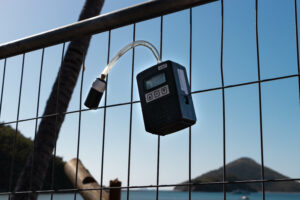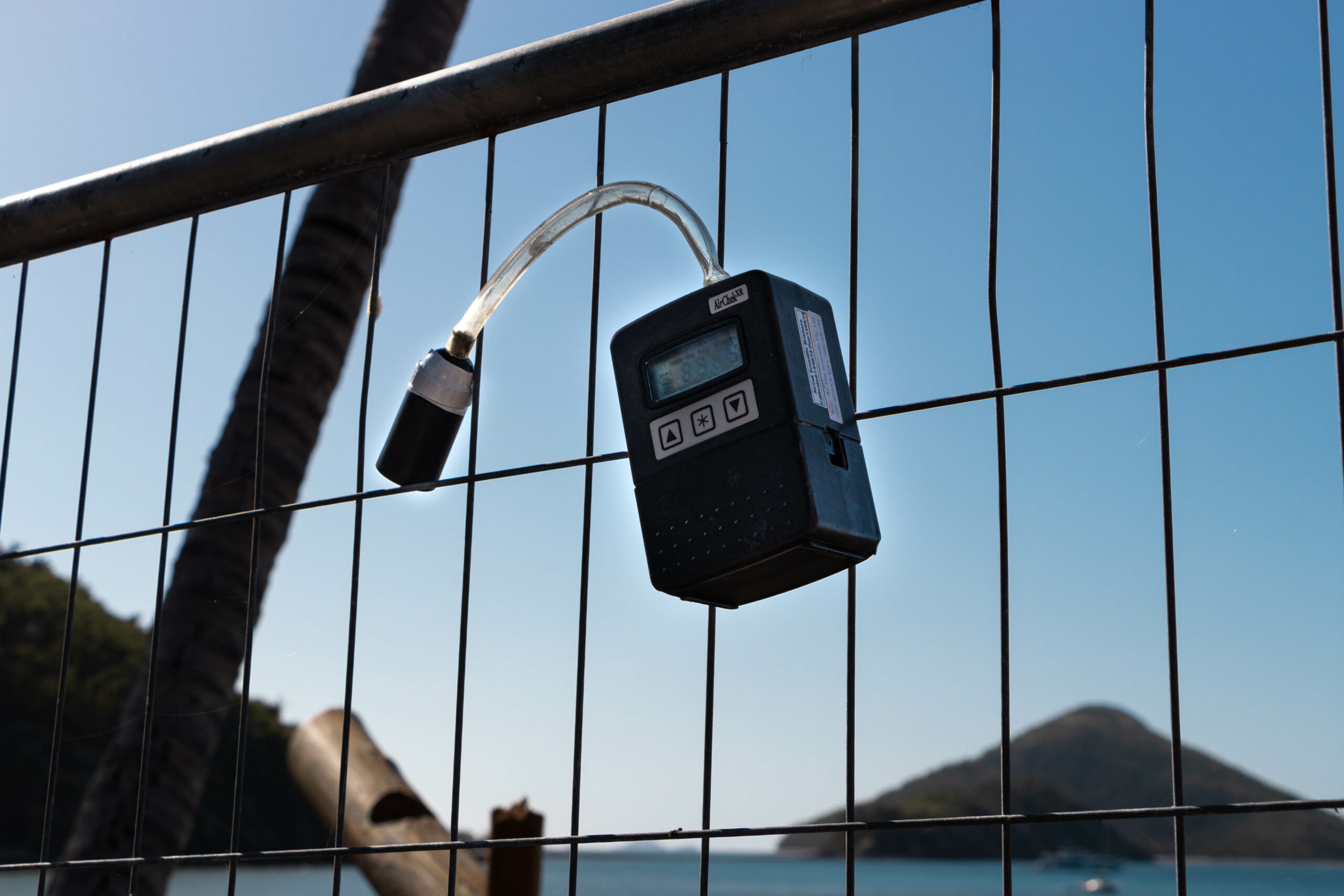
What is Asbestos Air Testing?
Asbestos air testing (otherwise referred to in the industry as asbestos air monitoring) is a crucial process designed to measure and analyse the presence of airborne asbestos fibres in indoor and outdoor environments. It involves collecting air samples from specific areas and subjecting them to thorough laboratory analysis to determine the concentration of fibres present. The testing process is carried out by qualified professionals known as Licenced Asbestos Assessors (LAA), who adhere to recognised guidelines and regulations.
Why is Asbestos Air Testing Necessary?
1. Health Risk Assessment: When released into the air and inhaled, asbestos fibres pose a significant health risk. Exposure to airborne asbestos fibres can lead to severe respiratory diseases, including lung cancer, asbestosis, and mesothelioma. Asbestos air testing helps assess potential deleterious health hazards and establish the need for remedial actions.

2. Risk Mitigation: All asbestos-related risks in the workplace must be managed with control measures. In certain situations, asbestos air sampling is necessary to validate control measures, ensuring the area is safe. It allows for informed decisions regarding asbestos removal, encapsulation, or ongoing management strategies.
3. Compliance with Regulations: Australia has stringent regulations to control and manage asbestos-related risks. Asbestos air testing is a vital component of compliance with these regulations. Under the Work Health and Safety (WHS) and Occupational Health and Safety (OHS) regulations, a Person in control of a business or undertaking (PCBU) must ensure the exposure limit is not reached. Regular asbestos testing assists property owners, employers, and regulatory bodies in identifying and addressing asbestos-related hazards.
When is Asbestos Air Testing Required?
In a broad sense, asbestos air testing is required whenever there is an elevated risk of airborne asbestos fibres. Events where asbestos-containing materials are damaged or have deteriorated over time and become friable, can yield significant risks of high asbestos fibre concentration levels in the atmosphere. The PCBU’s duty to ensure the workplace exposure standard (0.1 fibre/ml) isn’t breached must be met with asbestos testing of air quality.
Regulations and guidelines in Australia stipulate the need for asbestos air monitoring during asbestos-related works. Personnel conducting building or maintenance work that has the potential to disturb asbestos-containing materials should be monitored with a personal air monitoring pump to monitor the worker’s exposure levels and assess the safe work operating procedures.
Asbestos removal works must adhere to strict asbestos air monitoring requirements. Air monitoring is mandatory for all class A asbestos removal works, requiring asbestos testing of air before, during and after asbestos removal. Class B asbestos removal workers must perform asbestos air monitoring when other occupants or public members are near the removal area or pathways. Post class A or B asbestos removal works, a clearance inspection is performed by a licenced asbestos assessor, where air monitoring is used to validate the safety for reoccupation.
The Asbestos Air Testing Process
- Site Assessment: A Licenced Asbestos Assessor will consult the asbestos register and scope of works and conduct a visual inspection to determine the appropriate number of static asbestos air sampling locations. Generally, the number of workers undergoing exposure or personal asbestos air monitoring is established prior to the site assessment.
- Air Sampling: Asbestos air samples are collected using specialised air pumps capable of drawing air through an asbestos air sample (cassette) filter at volumes ranging from 500ml/min to 5000ml/min with exceptional precision. Based on the asbestos testing period, the pumps are set to a calculated flow rate and placed in the predetermined locations where airborne particulates are collected in a cassette filter for later analysis in the laboratory.

- Laboratory Analysis: Asbestos air samples are sent to NATA-accredited laboratories for asbestos fibre counting. The samples undergo meticulous testing using phase-contrast microscopy (PCM), which can detect and quantify fibre counts. The fibre counting results, along with the sample volume and several other variables, are then put through an equation to determine the fibre concentration.
- Reporting and Interpretation: The laboratory reports the fibre concentration, which is interpreted by the licenced asbestos assessor to assist in evaluating the potential risks, formulating appropriate management strategies, and complying with regulatory requirements.
The Types of Asbestos Air Monitoring
- Exposure air monitoring aims to assess a worker’s level of asbestos exposure. The worker wears a personal air monitor for a specific period measuring the concentration of asbestos fibres in the individual’s breathing zone.
- Background air monitoring evaluates ambient asbestos fibre concentrations in the atmosphere during normal conditions at a static location. This type of air monitoring is generally conducted before an event, such as asbestos removal work, to provide a baseline for comparing future results.
- Control air monitoring is generally only performed from a static location to evaluate the efficiency of control measures. Specific control measures like those used in asbestos removal work require air monitoring.
- Clearance air monitoring is conducted after asbestos removal work to ensure the area is safe for reoccupation. Enclosures from the removal must remain erect until the fibre concentration is below the acceptable level of less than 0.01 fibres/ml.
Navigating asbestos testing requirements is best handled by experienced consultants who are up to date with continually changing regulations. With over 60 years of experience in the industry, Global Asbestos Audits is well-qualified to answer your questions and manage asbestos testing.

